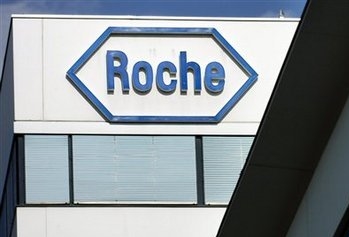6. Roche $17.7B ▲6.9%
Global revenue: $37.6B (4th); up 4.9%
Top brands: Rituxan ($3.5B); Avastin ($2.9B); Herceptin ($2.2B); Lucentis ($1.9B)
Promotional spend: $279.0M (21st); 1.6% of rev.
R&D spend: $9.5B (2nd); up 2%; 25.3% of rev.
Planned launches: PD-L1 (onc.); cobimetinib (onc.); ocrelizumab (MS); lampalizumab (ophthal.); crenezumab (Alzheimer’s)
Patent expirations: Tamiflu (2017); Xolair (2018)
For those who limit their analysis to a glimpse at the bottom line, Roche had a rough 2014. Its net income after taxes dipped 10% below 2013’s number and annual profits sank 16%—the first time in three years earnings failed to rise. But Roche management claims those figures resulted mainly from unfavorable foreign-exchange rates and a debt-restructuring deal. Despite some notable setbacks—poor Phase-III results on pipeline drugs gantenerumab (Alzheimer’s), bitopertin (schizophrenia) and MetMAb (lung cancer)—the company’s short-term fundamentals appear strong. In 2014 HER2-positive breast-cancer medicine sales rose 20%, Avastin sales jumped 5% and Tamiflu sales soared 54%. Additionally, Roche’s promising anti-PD-L1 oncology drug recently received Breakthrough Therapy status, which could lead to a filing for FDA approval before yearend. Long term, the company has bet heavily against biosimilars, choosing instead to improve existing products (the “bio-better” strategy). If the bio-generics take off, Roche’s sales will take a hit. Nevertheless, Roche continues to outwardly exhibit confidence.
Click here to return to main story.
From the May 01, 2015 Issue of MM+M - Medical Marketing and Media








